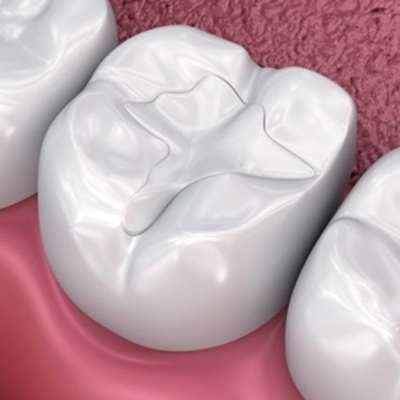Dental professionals and anyone working to promote oral health have employed various filling materials for damaged teeth throughout history. Many different materials, including pure gold, silver, composite, and even beeswax, have been used to fill teeth. Silver amalgam, sometimes referred to as a metal filling, and composite resin has emerged as the two best options.
The composite variety closely resembles natural teeth, which adds to its appeal. Silver metal fillings do, however, provide some advantages as well. To assist patients in choosing the kind that is ideal for their particular mouth, let’s examine the differences between silver metal and composite fillings.
The Basics of Metal Fillings
Metal fillings are constructed from copper, tin, silver, and mercury alloys. These fillings, commonly known as dental amalgam, have been around for about 200 years. The dental amalgam used today differs from that used in the past. Amalgam fillings of today are the outcome of decades of development. Amalgam fillings are far more durable and secure than older metal fillings, so consider getting one for your compromised tooth.
The Basics of Composite Fillings
Composite fillings are made of strong polymers and powdered porcelain. Because the porcelain is white, it will easily blend in with the neighboring teeth. Before applying the composite filling, the dentist carefully removes the tooth’s decaying area and thoroughly cleans the area. After being piped into place, the composite filler needs to be cured using a tiny ultraviolet light. The result is a beautiful smile that appears completely natural.

The Advantages of Silver Metal Fillings
The cost is one of the main benefits of choosing metal fillings over composite fillings. Metal fillings are less expensive than other filling materials. Amalgam fillings are the best option for individuals who are constrained for finances and usage of children’s teeth due to their inexpensive cost. In addition, kids don’t give their teeth much thought, so the presence of a silver filling won’t bother them as much as it would a teen or an adult.
For their endurance, metal fillings are also highly regarded. Unlike composite fillings in Santa Ana, which have a lifespan of 7 to 8 years, these fillings generally survive upwards of 13 years. Metal infill also has the advantage of being less susceptible to dampness. Dental amalgam placement is made simpler for dentists due to the lack of sensitivity.
The Advantages of Composite Fillings
Using composite fillings is quick and simple for both the patient and the dentist. A composite filling immediately begins to cure after exposure to ultraviolet light. The composite material firmly adheres to the concerned tooth. The fact that composite fillings resemble natural teeth in appearance may be their most obvious benefit. Nobody will know that you have a composite filling, not even those who are inches away from your teeth.
Metal fillings are held in place by the cavity’s shape, but Santa Ana’s composite fillings bind with the damaged tooth. As a result, deterioration has less room to form. Additionally, this strong link guarantees that the tooth structure will stay sturdy long after the filling has been placed.
Which is Better for Your Mouth: Silver Metal or Composite Fillings?
It is vital to undertake an analysis that explores both the drawbacks and benefits of both sorts to decide which filling is best for your mouth. Let’s study the disadvantages of metal and composite fillings.
If you use a silver filling instead of a composite one, it will be much more noticeable. Silver fillings gradually turn darker over time. Metal fillings can even oxidize to the point that they turn black and resemble the cavities intended to fill. Some concerns have been expressed over the mercury content of metal fillings. The American Dental Association has not yet deemed metal fillings to be completely safe, it should be mentioned. This is why many parents are dubious about the possibility that mercury contained in metal fillings could one day result in a few minor problems. Finally, it should be remembered that a metal filling may leak into the tooth, leaving a trace that gives the tooth a grayish tint.
Composite fillings rarely outlast traditional metal fillings in terms of durability. Due to composite fillings’ inability to self-seal as metal fillings do, they have a correspondingly limited lifespan. Additionally, composite fillings frequently need to be placed in layers to function properly, necessitating multiple dentist visits.
Conclusion
Your dentist will likely advise the visually attractive composite filling if the damaged tooth is near the front of the mouth and will be seen when you smile or laugh. A metal filling may be preferable if the tooth is in the rear of the mouth and has significant decay because it will stay longer and be hidden. If you’re unsure which type of filling is best for your mouth, speak with your dentist.
Let’s have a word!
If you have questions about tooth-colored fillings procedures or you might need a dental filling, contact our OC Dental Studio by calling (714) 613-0551, or you can book an appointment by filling out the form on our website.


